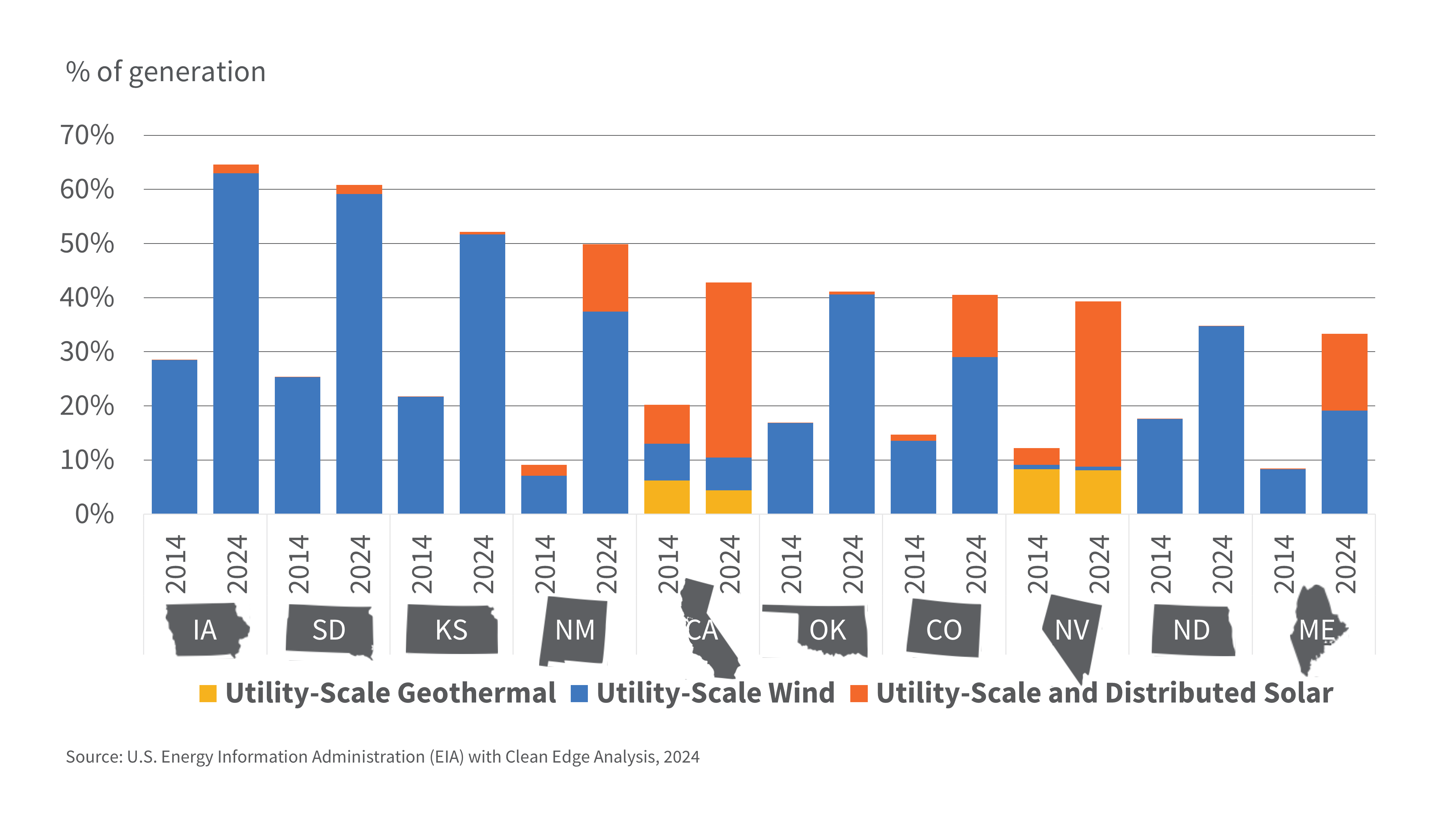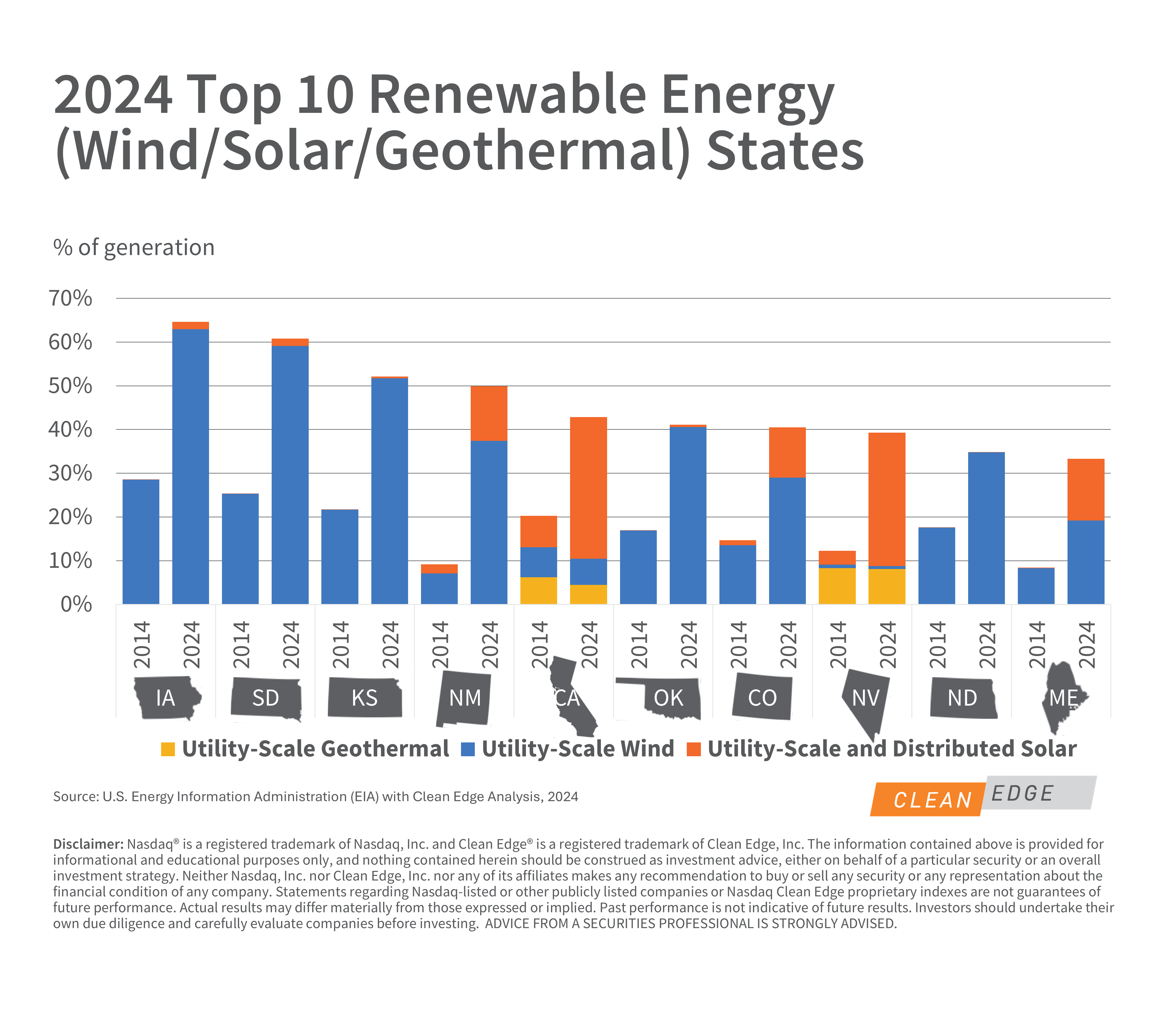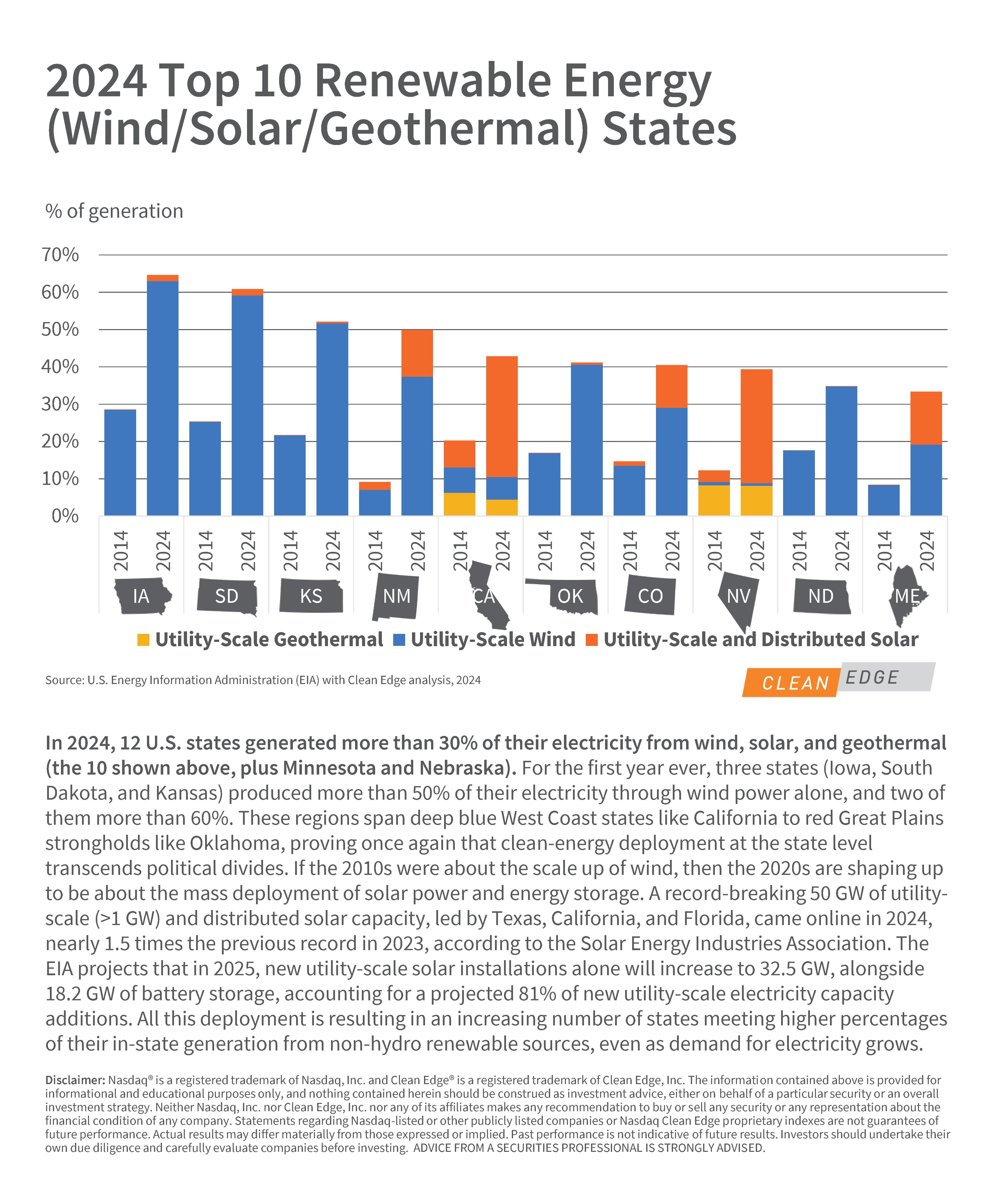In 2024, 12 U.S. states generated more than 30% of their electricity from wind, solar, and geothermal (the 10 shown above, plus Minnesota and Nebraska). For the first year ever, three states (Iowa, South Dakota, and Kansas) produced more than 50% of their electricity through wind power alone, and two of them more than 60%. These regions span deep blue West Coast states like California to red Great Plains strongholds like Oklahoma, proving once again that clean-energy deployment at the state level transcends political divides. If the 2010s were about the scale up of wind, then the 2020s are shaping up to be about the mass deployment of solar power and energy storage. A record-breaking 50 GW of utility-scale (>1 GW) and distributed solar capacity, led by Texas, California, and Florida, came online in 2024, nearly 1.5 times the previous record in 2023, according to the Solar Energy Industries Association. The EIA projects that in 2025, new utility-scale solar installations alone will increase to 32.5 GW, alongside 18.2 GW of battery storage, accounting for a projected 81% of new utility-scale electricity capacity additions. All this deployment is resulting in an increasing number of states meeting higher percentages of their in-state generation from non-hydro renewable sources, even as demand for electricity grows.
2024 Top 10 Renewable Energy (Wind/Solar/Geothermal) States







